Friendly, relaxing, surprising. These are three words that immediately come to my mind when I think of my visit to this charming and colorful Polish city. Gdansk is like that old friend whose company you always feel comfortable in, with whom you can totally loosen up and, at the same time, feel astonished. It’s a multicultural city situated on the coast of the Baltic sea, full of of influences from the Netherlands, Belgium, Germany, Scandinavia, Scotland, which you can see in so many details on every corner. Many buildings resemble those in Bruges or Amsterdam since the most talented Dutch architects designed many of them. A lot of Scottish craftsmen settled in Gdansk too. I would definitely recommend Gdansk as a great city break destination and a place for all the people who enjoy architecture, history and delicious food. Here are my impressions from my visit at the end of August. I hope you’ll find them useful and that they’ll inspire you in planning your own trip to Gdansk.
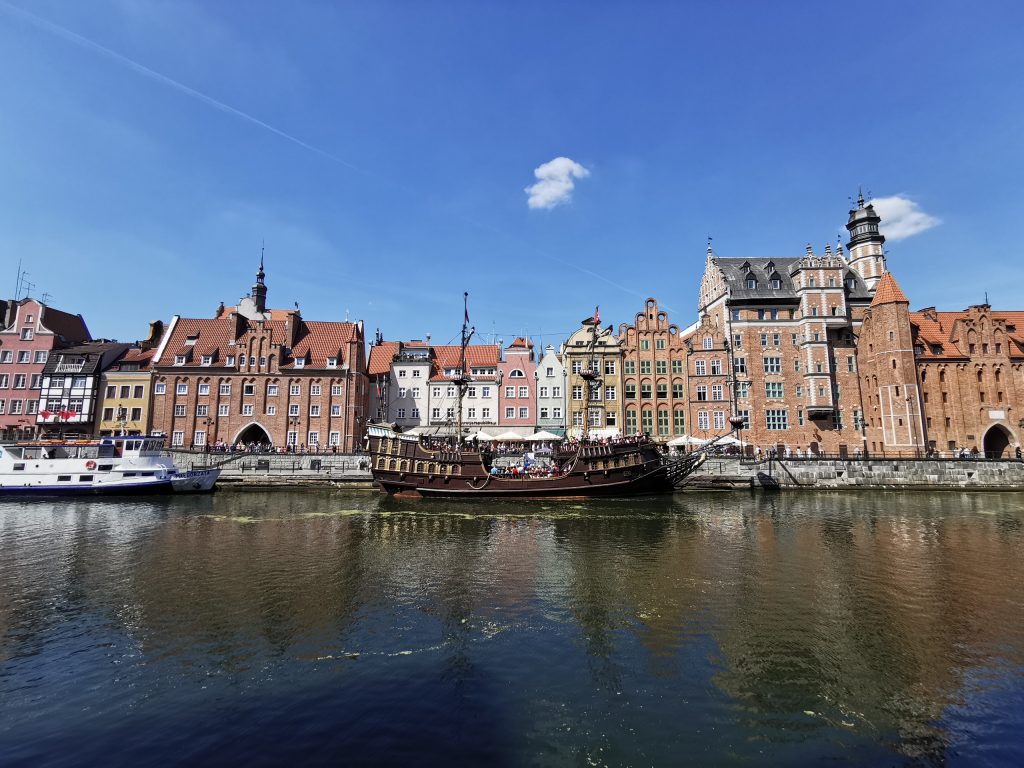
Panorama of the Long Riverfront. Photo credit: Putopis
How to get to Gdansk
My friends and I travelled from Zagreb, Croatia. Since there is no direct flight to Gdansk, our connection flight was via Warsaw. The flight from Zagreb to Warsaw lasts approximately an hour and a half. From Warsaw, we took a flight to Gdansk which lasted only an hour. The return ticket cost 260 EUR but if you plan your trip much more in advance you can find more affordable prices. We visited Gdansk at the end of August and the weather was really fantastic. It was sunny and warm all the time during our stay with the average daily temperature of 26 C degrees. Perfect for strolling the streets and exploring the city.
Local painters definitely have many motifs in Gdansk. Photo credit: Putopis
https://www.instagram.com/p/B1qQD4TFeAO/
About Gdansk
Gdansk had a very turbulent history, it was under German, Prussian and Polish rule. Prior to the growth of Warsaw it was considered to be the wealthiest and largest city of Poland, important seaport and shipbuilding center. During the German rule it was known as Danzig. It was here, just outside the city borders, that the first shots of the Second World War were fired on 1 September 1939. The city was devastated during the war, almost 90%, and it was rebuilt during the 1950s and 1960s. In August 1980, in Gdansk shipyards, Solidarity – the Eastern Bloc’s first regime-independent trade union and social movement began. It eventually led to the fall of the communist rule. Nowadays, Gdansk is a significant seaport, industrial, cultural and tourist destination, with around 460.000 inhabitants. More than 3,5 million tourists visit Gdansk every year, but, according to locals, it is also a relevant place for education since many Scandinavian students come to Gdansk to study medicine at Gdansk Medical University.
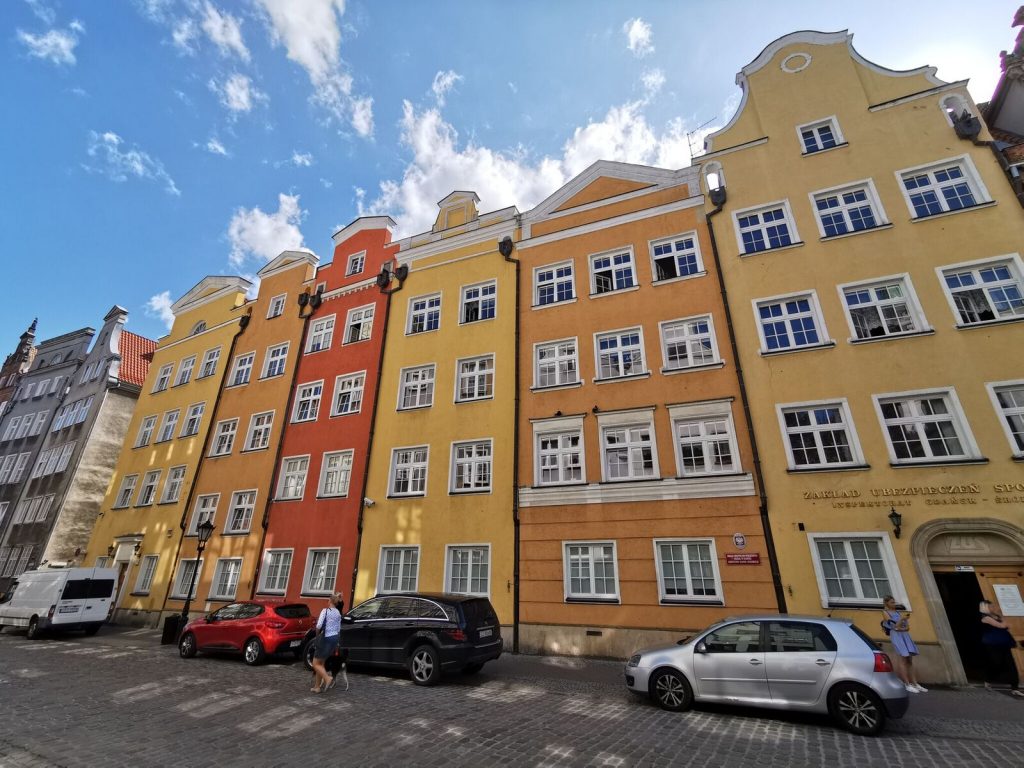
Colours everywhere. Photo credit: Putopis
Where to stay
Our hotel Ibis Gdansk Stare Miasto was situated in the old town, close to the city center. It’s newly renovated and in the perfect location if you want to explore the town on foot. It took us approximately 10 minutes to walk to the main pedestrian street Dluga Targ (Long Street). While strolling the streets from the hotel towards the city center you’ll pass Stolarska (Carpenter’s) and Profesorska (Professor’s) Street – streets named after professions – so it’s very easy to remember your way around without any map.
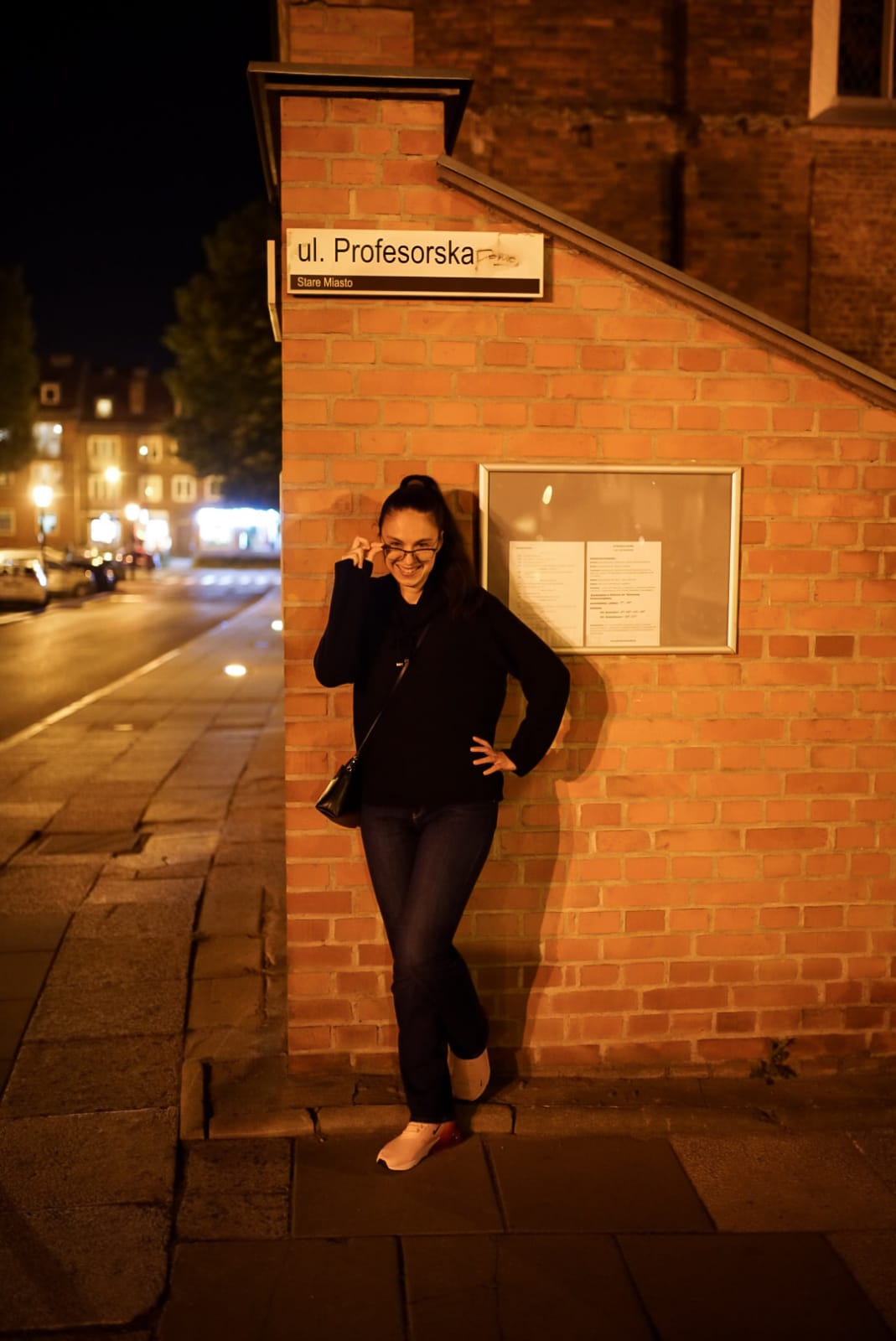
We couldn’t resist to take a photo. Photo credit: Domagoj Sever
Old town
Dluga Targ Street (Long Street) is the main pedestrian promenade, where you can see the Main Town Hall, Artus’ Court, the Fountain of Neptune, many shops, cafes and restaurants. During our stay this popular street was very crowded with tourists and street performers, which wasn’t strange at all since it was late summer. The Fountain of Neptune (bronze statue of the King of the Seas) is the symbol of Gdansk and its connection to the sea. It’s also a popular photo spot. If you love viewpoints I recommend the one at the top of the Main Town Hall. It will give you a wonderful view of the town, you can see numerous, unique Gdansk rooftops. What is fascinating regarding the rooftops is the fact that there are no two that are the same built in reconstruction of Gdansk. The Main Town Hall is Gdansk History Museum today. Just beside it you’ll see the Artus’ Court – the historic meeting place of the Gdansk elite. The most distinguished guests were received here like Kings of Poland.
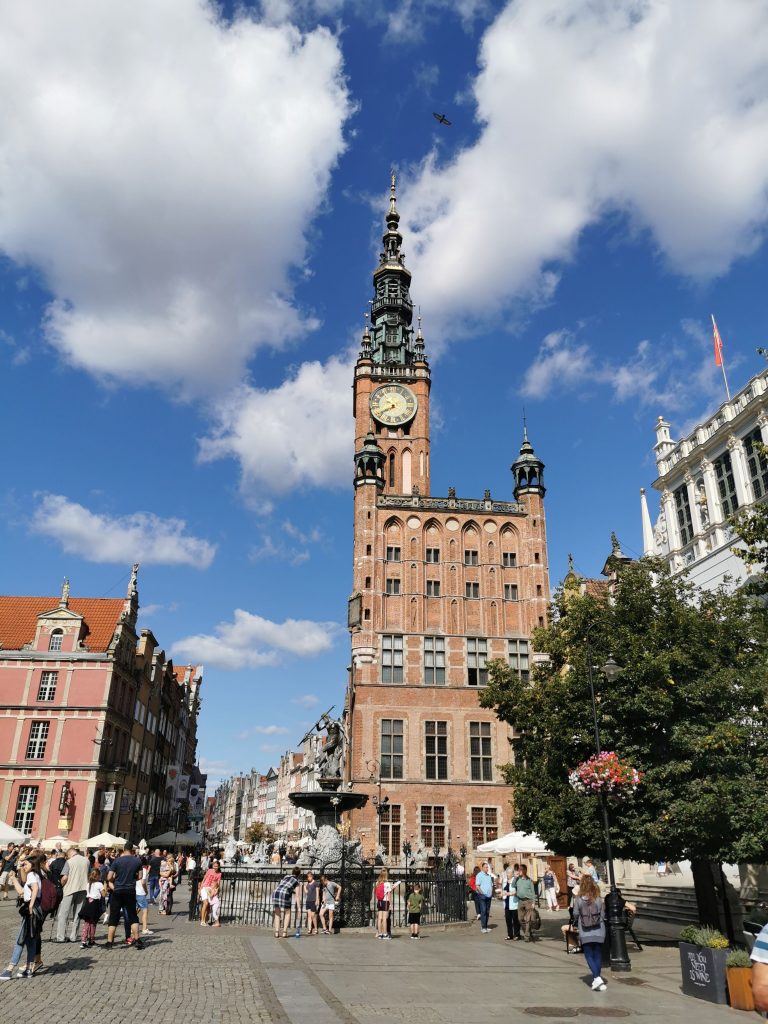
The Main Town Hall and The Neptune’s statue. Photo credit: Putopis

The entrance to the Main Town Hall and a great retro photo motif. Photo credit: Domagoj Sever

The view of the city from the tower. Photo credit: Putopis
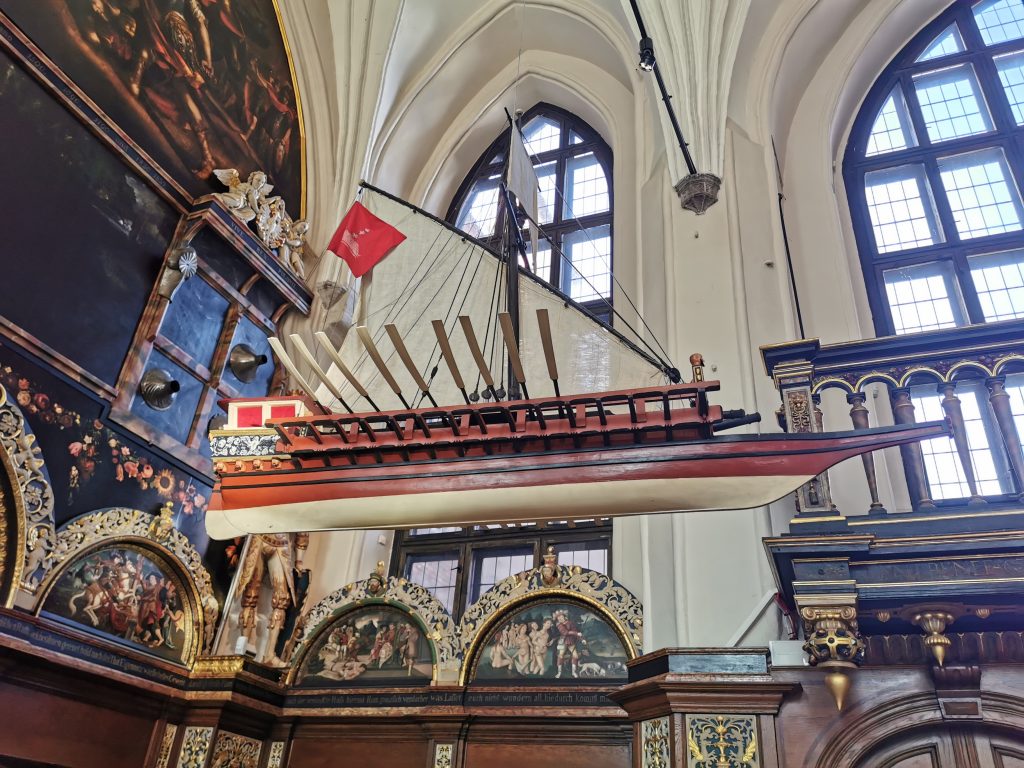
Artus’ Court. Photo credit: Putopis
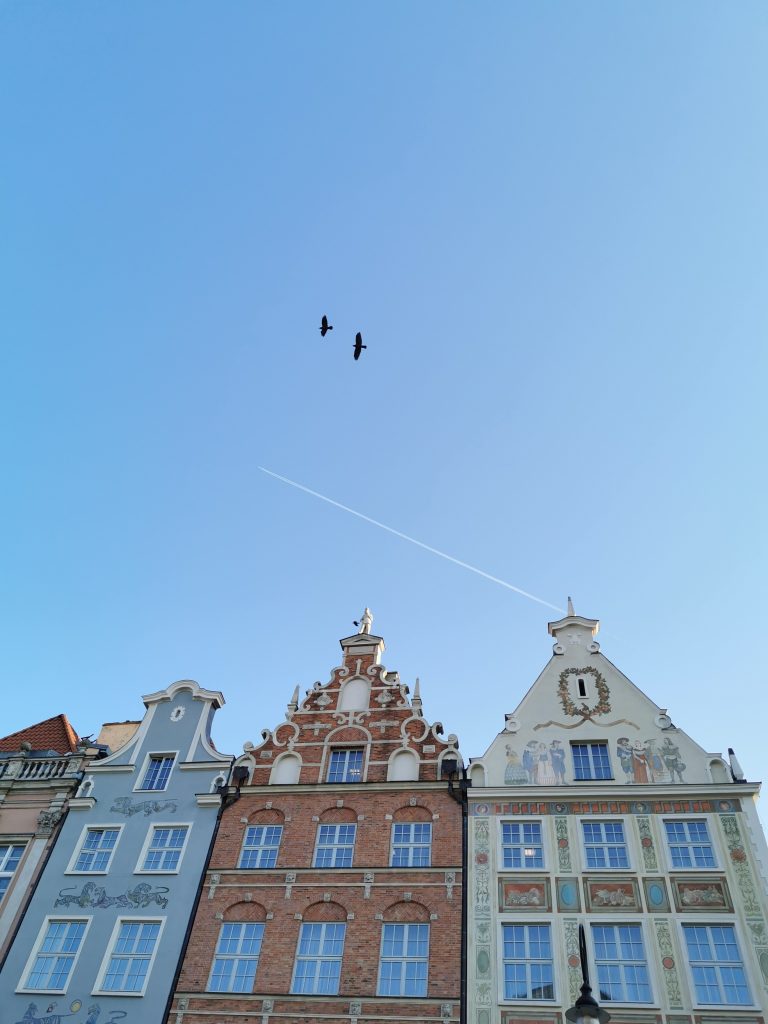
Beautiful Gdansk architecture and numerous different rooftops. Photo credit: Putopis
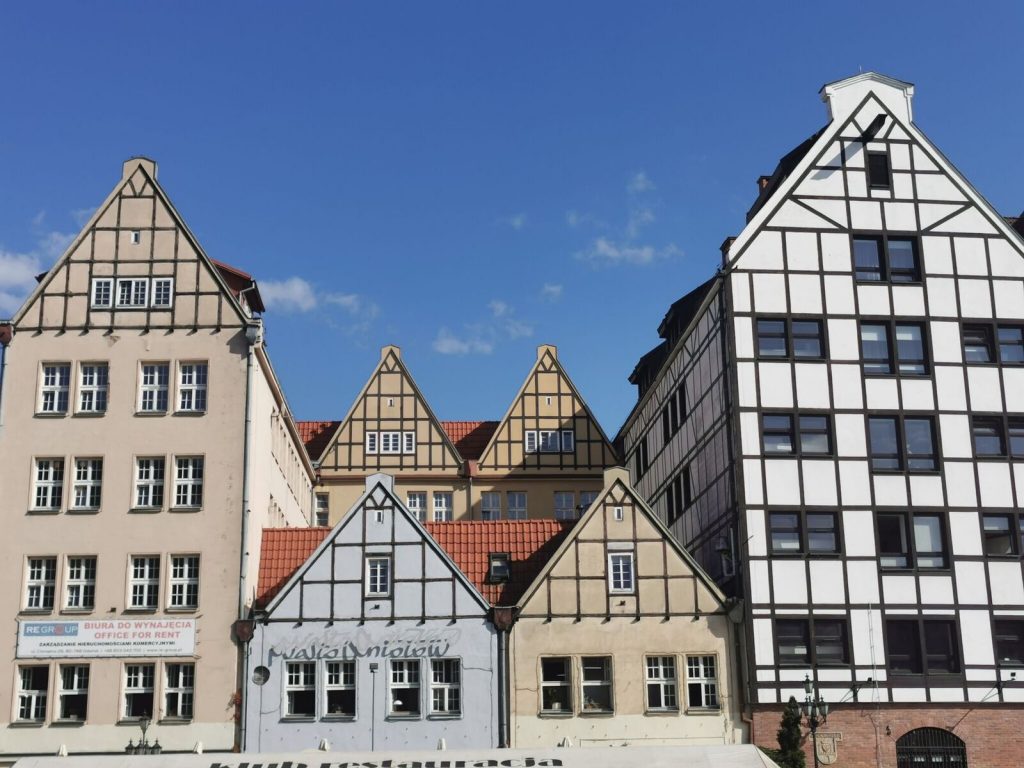
Photo credit: Putopis
Dluga Targ Street will lead you to the Long Riverfront (Dlugie Pobrzeze) – another Gdansk promenade where you’ll find lots of restaurants, shops and tourists boats. You will definitely notice another symbol of the city here – the Crane. It’s a restored 15th century wooden port crane. It was used to lift beer and wine barrels, stone ballast or masts. With its mechanism it could lift up to 2 tonnes to the height of 27 meters, which is really impressive.
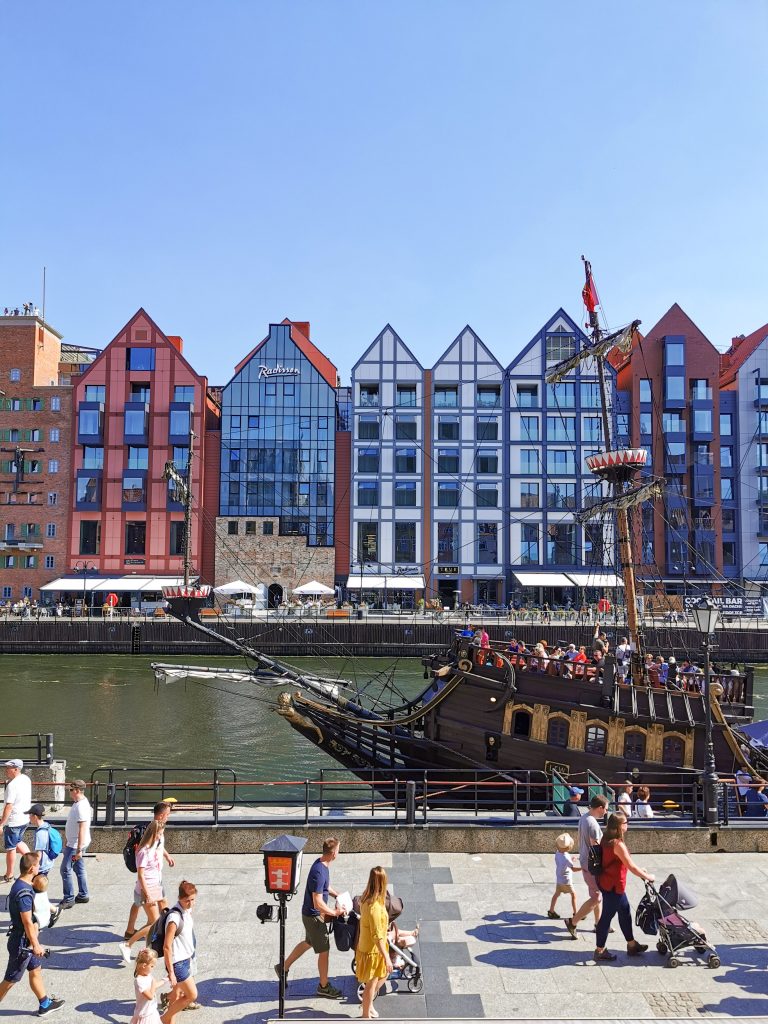
You can book a boat ride on the Long Riverfront. Photo credit: Putopis
Continue your walk along the Long Riverfront to the pedestrian bridge (Olowianka footbridge). It opens every half an hour, but be sure to check the schedule displayed next to the bridge. Cross it and you’ll find yourself on the Olowianka island where you’ll see another photo point – the Gdansk sign. I suggest you stroll on both sides of the river bank.
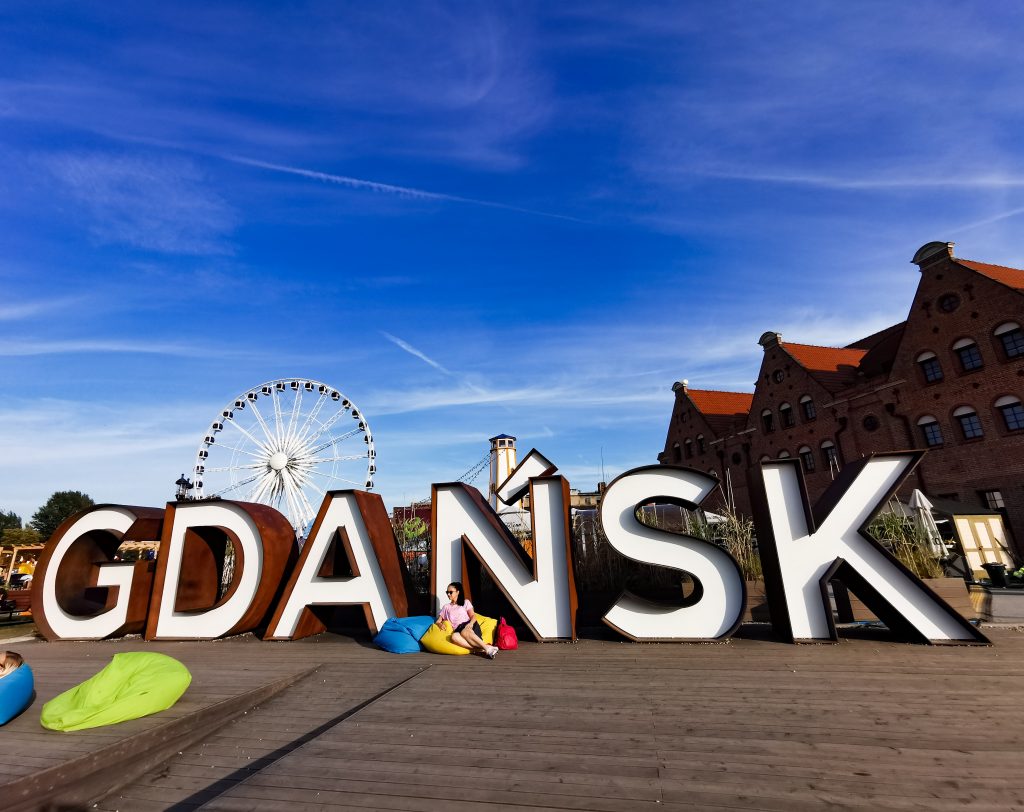
Photo credit: Putopis
TIP: You’ll find a great view of the river and Long Riverfront promenade from the Archaeological museum. The view from the upper floor is a wonderful photo spot. On the other side of the bank of the Motlawa river, there is a good view point as well from the cafe Sassy in the restaurant market Slony Spichlerz.
The kingdom of amber
Just behind St Mary’s Church, the biggest church built from bricks – to be exact 1 million – is Mariacka Street, ‘the street of amber’. This whole street is dedicated to amber and there you’ll find many galleries and shops selling jewellery made of the so called ‘Baltic gold’. Baltic sea is rich with amber or, as Slavs called it, yantar. They believed amber was the fossillised tear of the goddess Jurate, who was punished for her infidelity by her husband Perkunas, the god of thunder. The fact is that amber has been used in medicine for centuries. To disinfect wounds or to strengthen the body’s constitution. Physician Nicholas Copernicus prescribed amber powder for heart ailments.
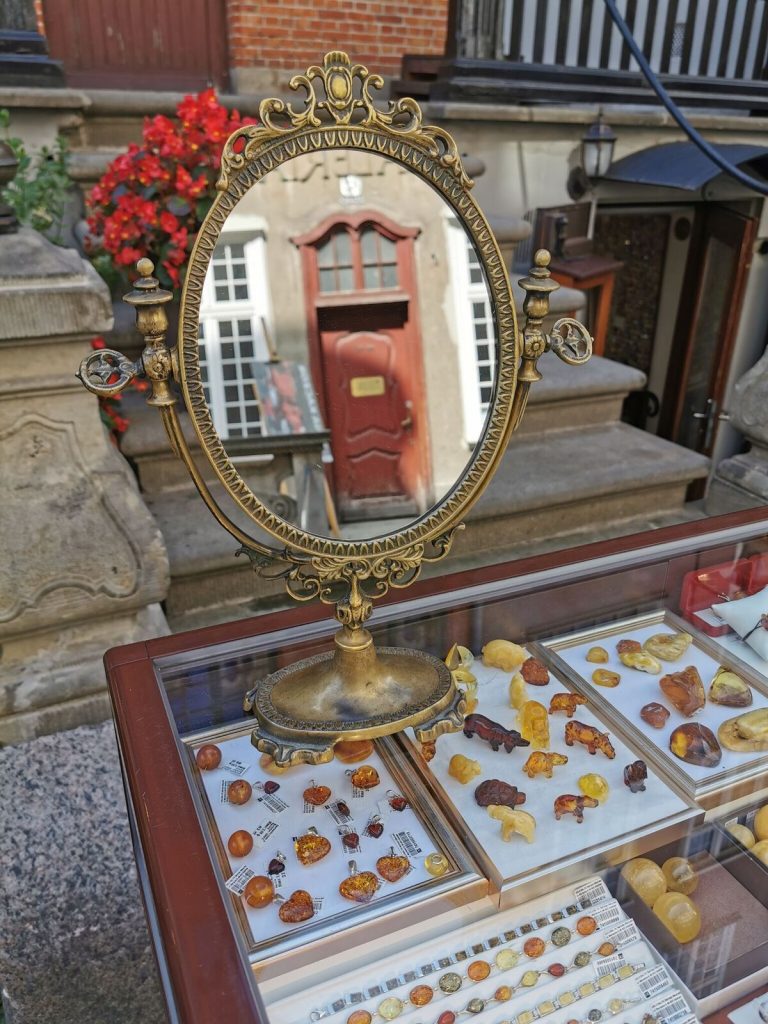
Photo credit: Putopis
Strolling Mariacka Street you’ll notice specific architectural ornaments on the terraces of buildings. Unusually placed stone heads of lions, dragons and some kind of sea monsters. They’re called Gargoyles and, actually, you can find them all around the old town but mostly in Mariacka Street. They are specific for Gdansk architecture and they were used for rain drainage. Today, they don’t have that function any more but we found them to be interesting photo motifs.
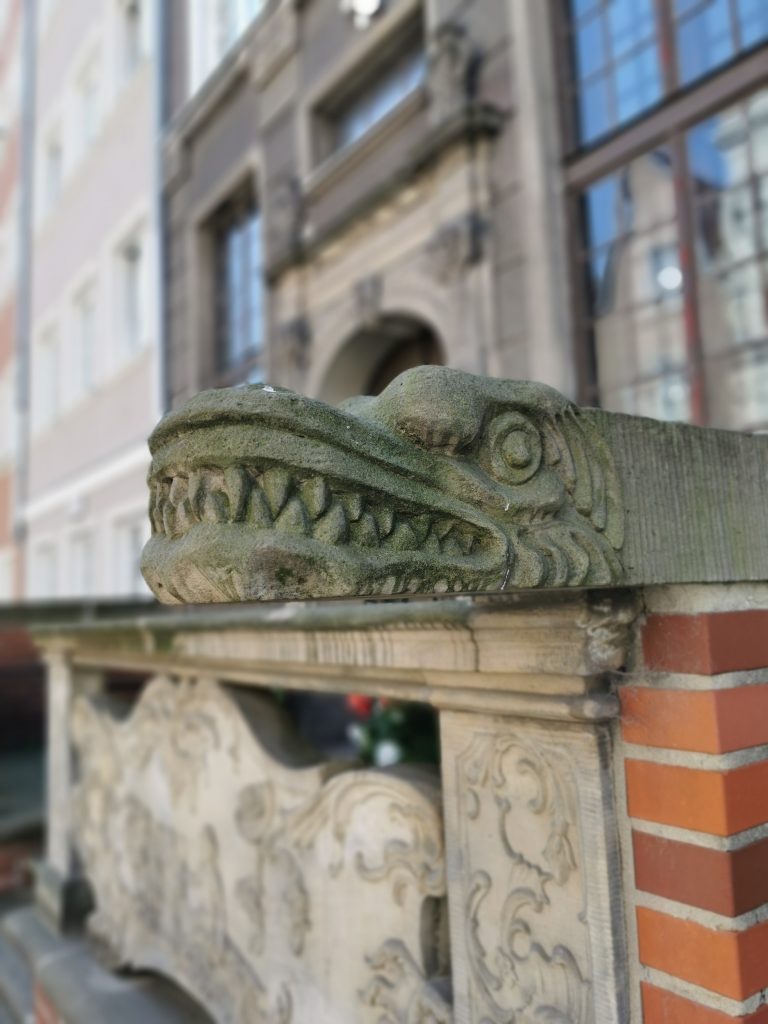
Photo credit: Putopis
TIP: At the end of Mariacka Street towards the river we found a charming cafe bar Kamienica serving coffee, tea and delicious cakes. We spent a wonderful afternoon there enjoying our coffee, cakes and music – it’s definitely a place I would recommend. The atmosphere was even better with the street musician playing ‘Stairways to Heaven’ on his guitar.
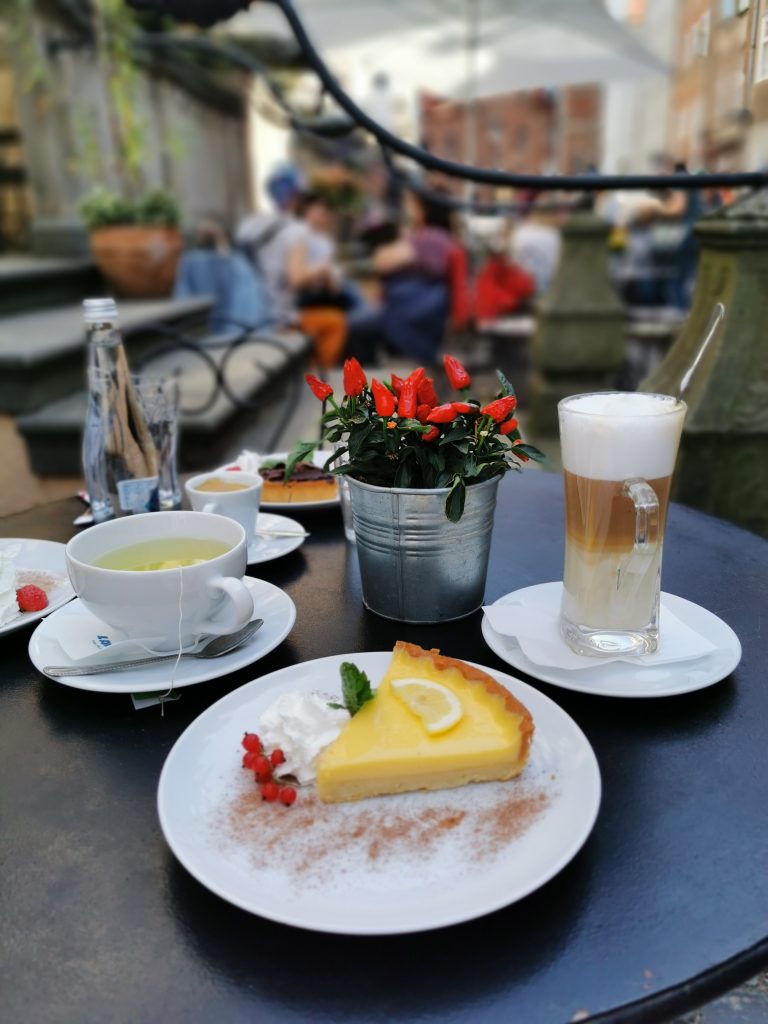
Photo credit: Putopis
Food scene
This is not my first visit to Poland and I can truly say their cuisine is delicious. I especially liked Gdansk cuisine . Probably because it traditionally involves a lot of fish, which I like. But I’m also delighted with their traditional dish – dumplings. Gdansk is full of charming restaurants with quality food at very agreeable prices. We visited many of them and here are my recommendations. Restaurant Chleb i Wino is situated in the city center and it’s very cozily decorated. Its specialty is pasta and they bake their own bread daily. We paid around 200 PLN for lunch for 3 persons (we all ordered entree, main dish and desert, we also had a glass of wine). Another place that I would highly recommend is pierogiarnia Mandu. This restaurant is specialized in their traditional meal pierogi or dumplings – and they are doing a great job. You should definitely visit this place and try delicious dumplings – the choice is very wide regarding the fillings. We decided to try out different ones – cheese, spinach and venison. The price of one traditional dumplings portion (10 pieces) vary – from 18 to 26 PLN – depending of the filling of course. Another amazing place to dine is Gdanski Bowke situated on the Long Riverfront (Dlugie Pobrzeze). You’ll experience marvelous food, great service, very nice ambient and cheerful atmosphere. I especially liked their fish pate. Another very nice restaurant on the Long Riverfront is Rybka ma wartkiej. I really liked their selection of desserts. Lunch for 3 people was also around 200 PLN. If you find yourself in the old city, you can have lunch or dinner at Gvara, serving dishes prepared with fresh and local products.
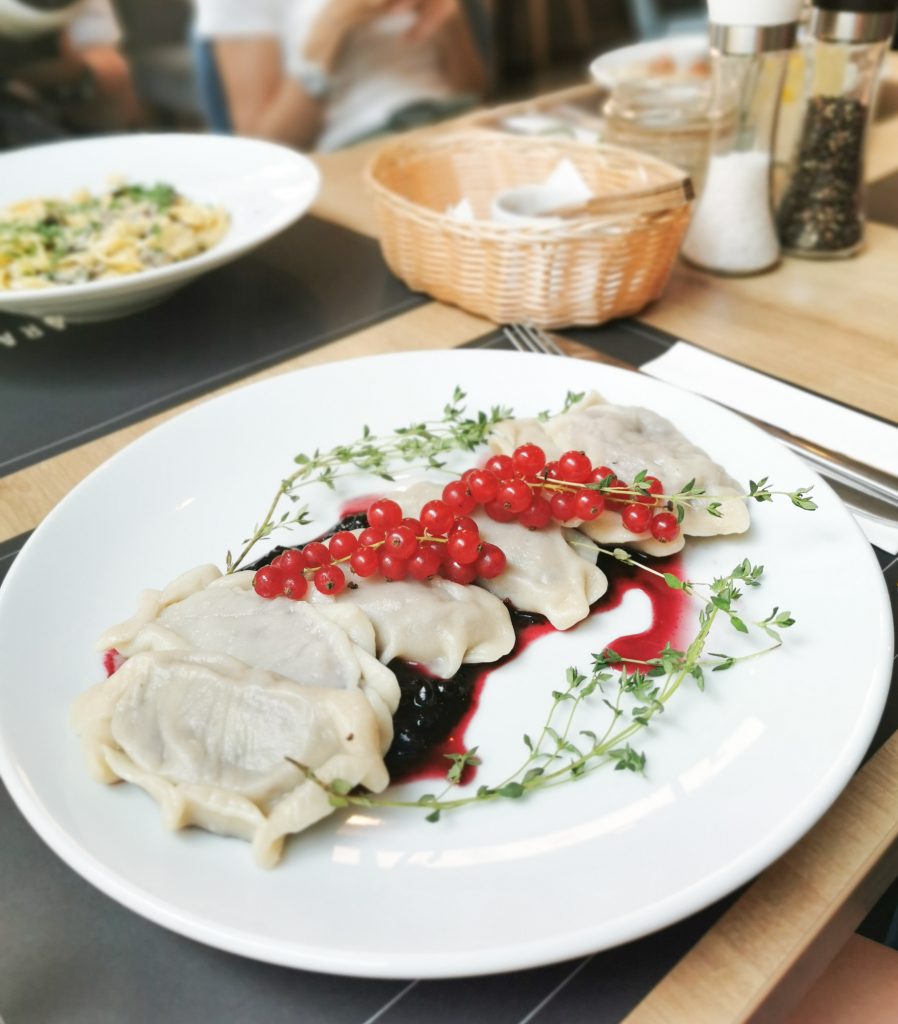
We tried these delicious dumplings with roast duck, cranberry, walnuts and pear sauce. Photo credit: Putopis
TIP: If you visit Gdansk in nice weather be sure to chill on the deck chair on a terrace of one of the bars in the Long Riverfront and enjoy the sun, the view of river and some nice cocktails :-)
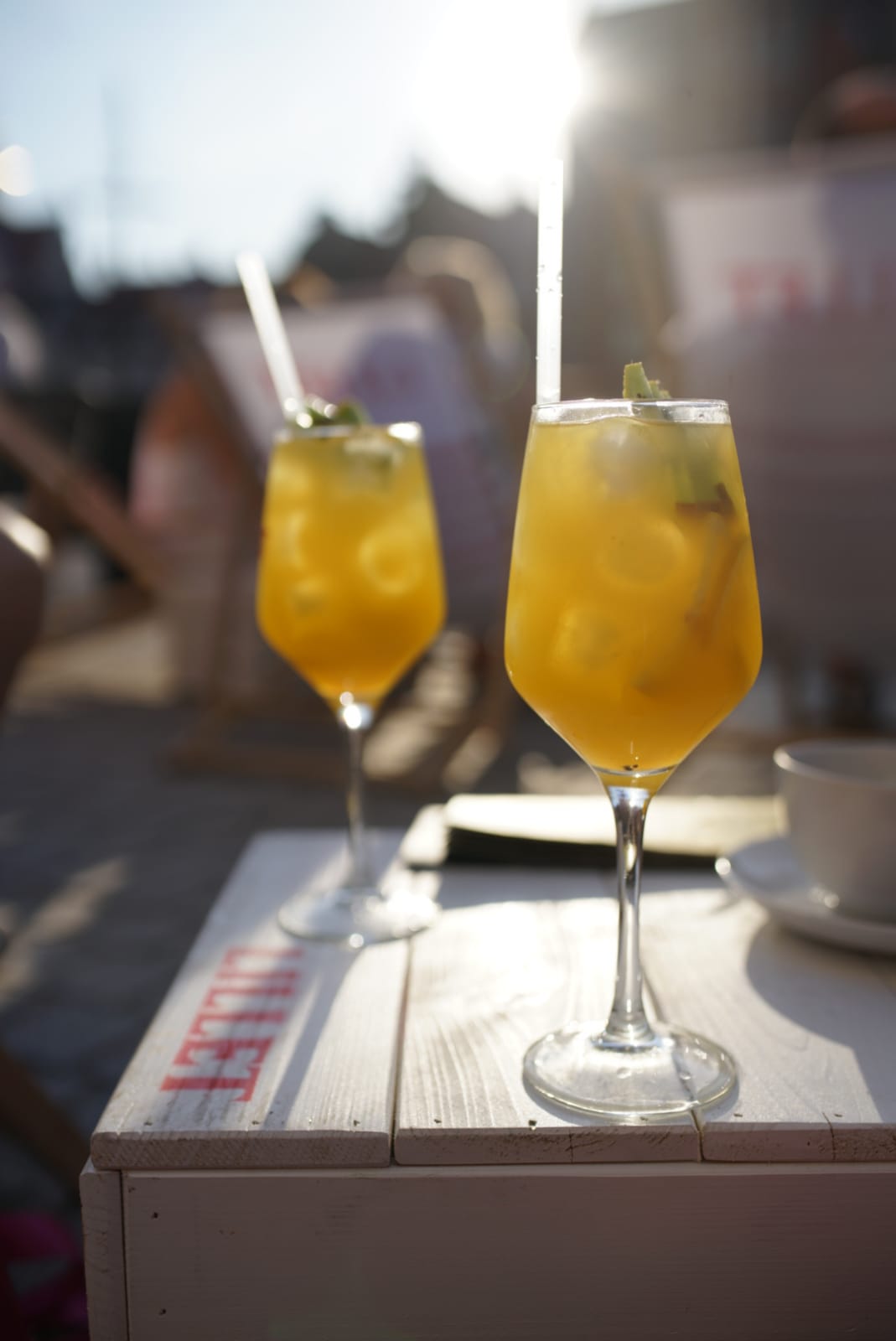
We tried this one called Tropical Cadillac. Photo credit: Domagoj Sever
Museums
Gdansk has many museums but one is really special. The Museum of the Second World War is not to be missed if you’re visiting Gdansk and it won’t leave anyone indifferent. As dr.Karol Nawrocki, the director of the museum, says:
No better place could be found to talk about the complexity of the 20th century history than Gdansk – the city of the first shots of the Second World War and the city of Solidarity.
This modern museum building is divided into three zones, which represent the connections between the past, present and the future. The section about the past is situated in the basement. The main exhibition of the Second World War is placed 14 meters below the ground. Its area occupies almost 5 thousand square meters, which makes it one of the largest exhibitions by historical museums in the world. The exhibition will take you through the story of the war presented in modern, powerful and interactive way. In some areas of the museum, you’ll feel like you stepped into the past, like you’re there and you can almost feel it, all the weight and hardship of that time. This museum will definitely make you reflect on the past as well as the present. It’s a reminder of the history that is not to be forgotten. The ticket price is 23 PLN. Another great exhibition is about the solidarity movement. It’s situated in the building of the European Solidarity Center on the Solidarity Square. In front of the building, you’ll see the three tall crosses – the Monument to the Fallen Shipyard Workers.
TIP: Besides great museums, Gdansk also has a Gdansk Shakespeare Theatre. Its building may look unconventional at first but I love the story behind it. The building is actually the ‘box for precious items’ – in this case a theatre. Like a jewel that has been stored inside. Find all about it on Gdansk Shakespeare Theatre.

Entrance to the Shakespeares Theatre. Photo credit: Putopis
I really hope I’ll have the chance to visit Gdansk again and explore the city, its gastro scene and surroundings some more. So if you want to feel happy, relaxed and like you’re in the company of a good old friend you should definitely visit Gdansk. I know I’d like to :-)
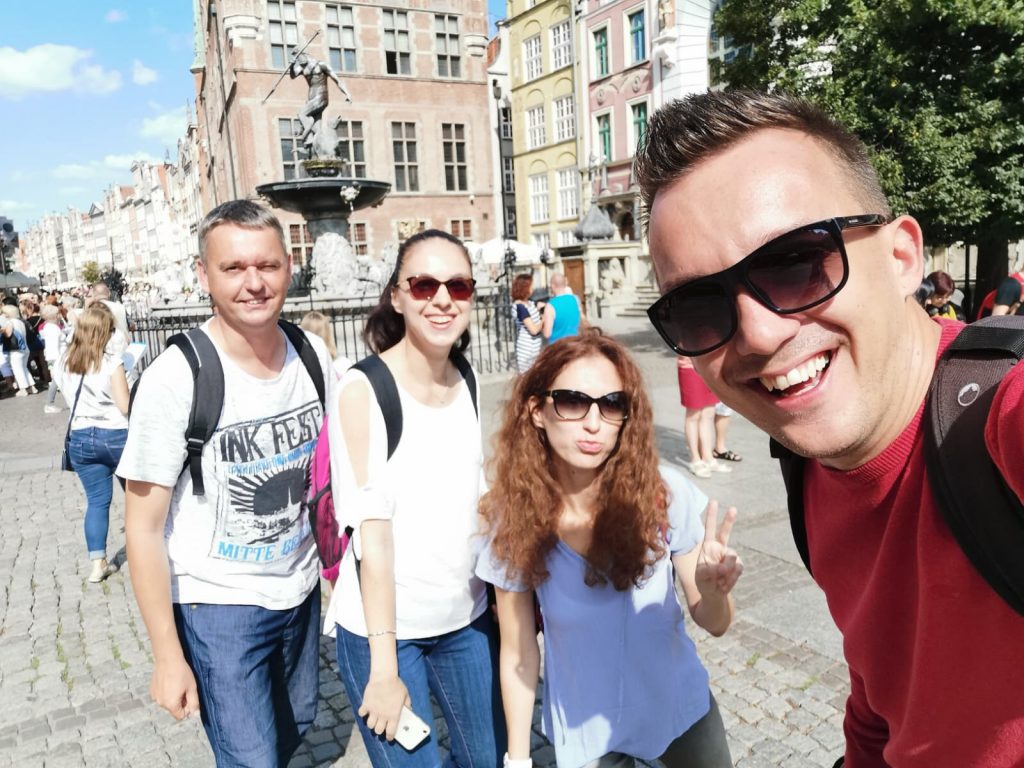
Thank you Gdansk for an amazing time :-)
Jasminka Đaković
This trip was done in cooperation with Gdansk Tourism Organisation.
All stated opinions are my own and are not influenced in any way.


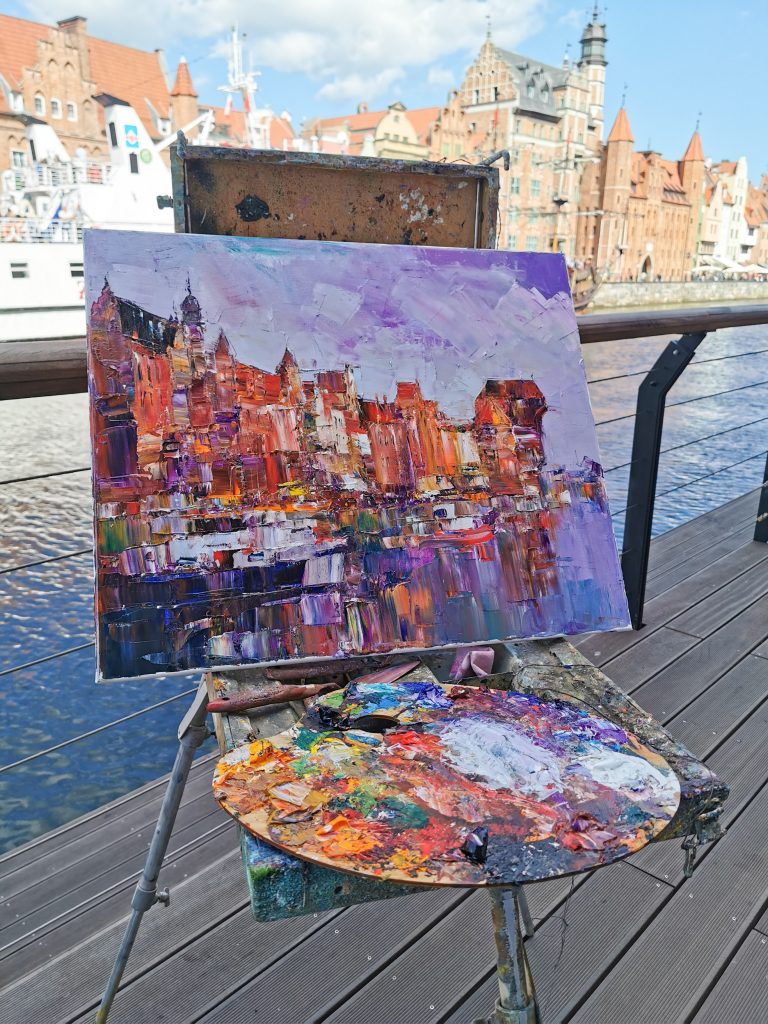
4 comments
I never knew about this place. It’s beautiful. Is traveling there expensive?
Thank you so much. We were there in 2019 and it wasn’t an expensive trip for us, it was very affordable.
What a fantastic post and so well researched! I’ve been to Gdansk just once (my family are Polish) and absolutely loved it. Your post brought back great memories, but also made me realise that I barely scratched the surface! I definitely have to go back for a longer visit, a trip up the tower and a boat ride are definitely in order.
Thank you so much for you comment Sabina. We’re so happy our blog evoked great memories for you. We simply fell in love with Gdansk, it’s a true gem and we plan to visit it again :)